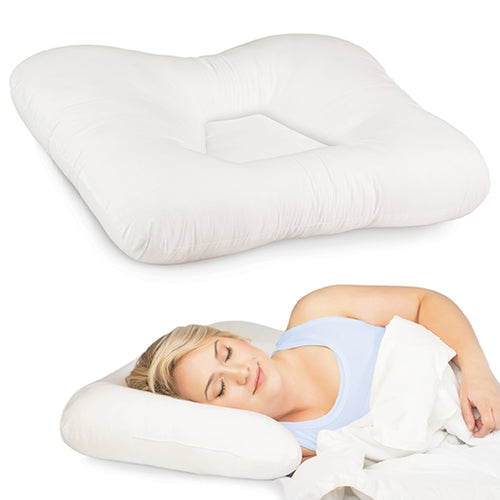

Understanding Tech Neck: Causes, Effects, and Prevention
In the modern digital age, our lives are intricately woven with technology. From smartphones to laptops, we spend significant portions of our day glued to screens. While technology has undoubtedly revolutionized how we work, communicate, and entertain ourselves, it has also introduced new health concerns. One such concern is "Tech Neck."
What is Tech Neck? Tech Neck refers to the strain and discomfort that develops in the neck, shoulders, and upper back due to prolonged use of smartphones, tablets, and computers. It's a result of poor posture while using these devices, often characterized by slouched shoulders, forward head position, and hunched back. Over time, tech neck can damage your muscles and misalign your spine, leading to poor posture, joint inflammation, pinched nerves, and herniated discs.
Causes of Tech Neck:
Prolonged Device Usage: With the prevalence of smartphones, tablets, and laptops, many people spend hours each day with their heads bent forward, staring at screens. This sustained position puts immense strain on the muscles, ligaments, and tendons in the neck and upper back.
Incorrect Posture: The way we hold our devices also contributes to Tech Neck. Instead of holding them at eye level, individuals tend to hunch over, causing their necks to bend forward at unnatural angles.
Lack of Movement: Extended periods of sitting and staring at screens without breaks can exacerbate Tech Neck. The lack of movement restricts blood flow and causes muscles to become stiff and tense.
Effects of Tech Neck:
Muscular Strain: The muscles in the neck, shoulders, and upper back bear the brunt of Tech Neck. Prolonged strain can lead to muscle stiffness, soreness, and fatigue.
Neck and Shoulder Pain: Tech Neck often manifests as a dull ache or sharp pain in the neck and shoulders. Over time, this discomfort can become chronic and debilitating.
Postural Issues: Continual slouching and poor posture can alter the natural curvature of the spine, leading to postural imbalances and spinal misalignment.
Headaches and Migraines: The tension and strain in the neck and upper back can radiate upwards, causing tension headaches and even migraines in some cases.
Prevention and Management:
Ergonomic Setup: Maintain an ergonomic workspace by positioning your computer screen at eye level and using an adjustable chair with proper lumbar support. Similarly, hold your smartphones and tablets at eye level to reduce strain on the neck. You may also want to consider products designed to help prevent tech neck and promote healthy posture, like the Core® Perfect Posture Corrector
Take Breaks: Practice the 20-20-20 rule: every 20 minutes, take a 20-second break and look at something 20 feet away. This simple habit helps reduce eye strain and gives your neck and shoulders a much-needed rest.
Stretching and Strengthening Exercises: Incorporate stretching and strengthening exercises into your daily routine to alleviate muscle tension and improve posture. Simple exercises like neck stretches and shoulder shrugs can help loosen tight muscles and prevent Tech Neck. Utilizing the Apex Cervical Orthosis™ cervical traction support can aid in mitigating forward head posture.
Mindful Device Usage: Be mindful of your posture while using electronic devices. Sit up straight, keep your shoulders relaxed, and avoid hunching over your screen. Consider using ergonomic accessories like laptop stands and external keyboards to promote better posture.
Regular Physical Activity: Engage in regular physical activity to counteract the effects of prolonged sitting and screen time. Activities like yoga, Pilates, and swimming can improve flexibility, strengthen muscles, and promote overall well-being.
Additional Considerations: Other factors to consider include sleeping with the head elevated too high, maintaining poor posture, or experiencing an acute injury such as whiplash. Consider using the Therapeutica® Orthopedic Sleeping Pillow or other cervical support pillows to help restore the natural curve of your neck while you sleep.
In addition to Tech Neck, various other types of neck pain can arise from different causes. For instance, acute neck pain might stem from sudden injuries such as whiplash, which involves the rapid back-and-forth motion of the neck. Chronic neck pain, on the other hand, can be linked to conditions like cervical spondylosis, herniated discs, or muscle imbalances due to long-term poor posture or repetitive strain. Understanding these diverse types of neck pain is crucial for tailored prevention and treatment approaches, such as therapies like Bowen Therapy, which focus on restoring balance and alleviating tension in the musculoskeletal system.
Conclusion:
Tech Neck is a prevalent issue in today's digital world, but it's not inevitable. By adopting healthy habits, maintaining proper posture, and incorporating stretching and regular movement into our lives, we can prevent and manage Tech Neck effectively. Remember, taking care of our physical health is just as important as staying connected in the digital age. The goal is to strive for balance and prioritize our well-being in this technology-driven world.
Sources:
https://www.health.com/tech-neck-7488554
https://nielasher.com/pages/core-products?ref=core_products
This post contains affiliate links to an educational video by Neil Asher Education. If you choose to purchase or sign up through these links, Core Products may earn a small commission, as required by FTC guidelines, which helps us continue providing helpful resources to you - at no extra cost.
Mentioned Products

Apex Cervical Orthosis

Tri-Core Cervical Support Pillow

Core Perfect Posture Corrector, Black

Therapeutica Orthopedic Sleeping Pillow





